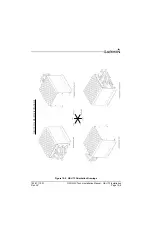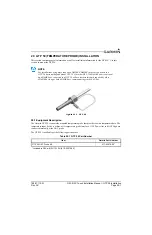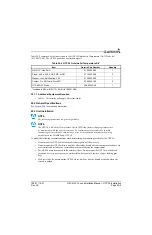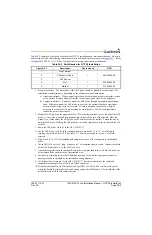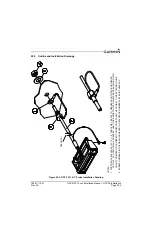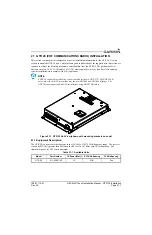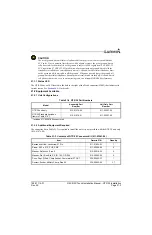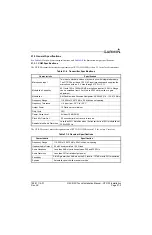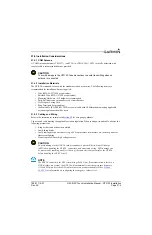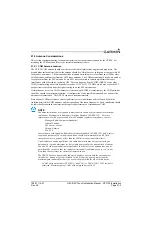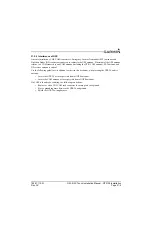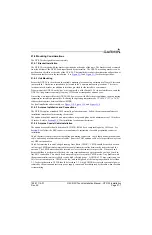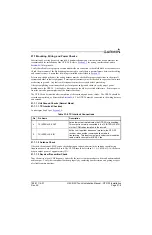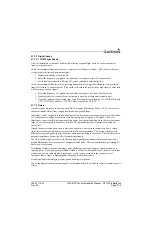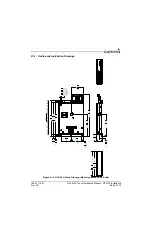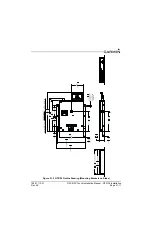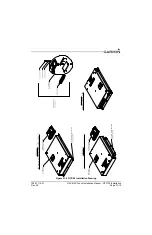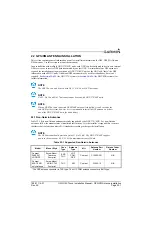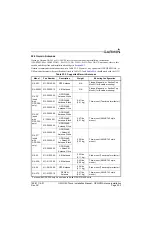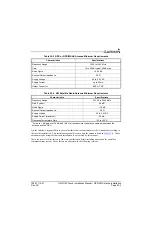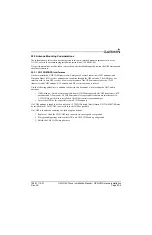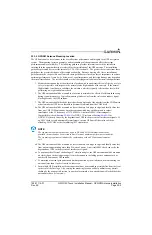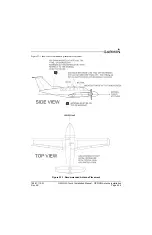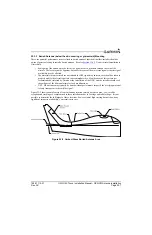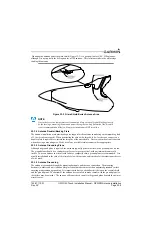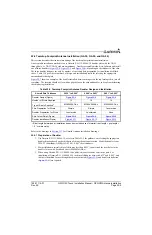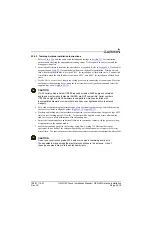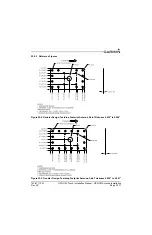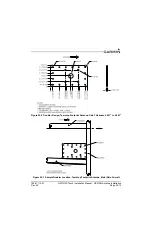
190-01115-01
G3X/G3X Touch Installation Manual - GTR 20 Installation
Rev. AC
Page 21-9
21.7.2 Flight Checks
21.7.2.1 COM Flight Check
After the installation is complete, perform the following required flight checks to ensure satisfactory
transceiver performance.
Check the communications transceiver at a range of at least 50 nautical miles: (This check verifies unit
receiver sensitivity test and transmitter range)
1. Maintain an altitude of 5000 ft AGL.
2. Select the frequency of a ground station facility at a range of at least 50 nautical miles.
3. Verify that communication (RX and TX) can be established with that facility.
Check the communications receiver by receiving transmission from a ground station in close proximity
(range of less than 10 nautical miles): (This check verifies that the receiver has a high signal to noise ratio
when receiving a strong signal.)
1. Select the frequency of a ground station facility at a range of less than 10 nautical miles.
2. Make sure the received audio from that station is clear (no background electrical noise).
3. If possible, perform the preceding steps 1 and 2 for frequencies in the high (~136.XXX MHz), mid
(~127.XXX MHz), and low (~118.XXX MHz) range of the GTR 20.
21.7.3 Noise
As audio signals are routed to and from the GTR 20 (Headset, Microphone, Music, AUX), care must be
taken to minimize effects from coupled interference and ground loops.
Interference can be coupled into interconnecting cables when they are routed near large AC electric fields,
AC voltage sources, and pulse equipment (strobes, spark plugs, magnetos, EL displays, CRTs, etc).
Interference can also couple into interconnecting cables by magnetic induction when they are routed near
large AC current-carrying conductors or switched DC equipment (heaters, solenoids, fans, autopilot
servos, etc).
Ground loops are created when there is more than one path in which return currents can flow, or when
signal returns share the same path as large currents from other equipment. These large currents create
differences in ground potential between various equipment operating in the aircraft. These differences in
potential can produce an additive effect at audio signal inputs.
The GTR 20 audio inputs may detect the desired input signal plus an unwanted component injected by
ground differentials, a common cause of alternator-related noise. This can be minimized by isolating all
audio jacks from ground.
Terminating shields at just one end (single-point grounding) eliminates another potential ground loop
injection point. The single-point grounding method is critical for the installation of various avionics that
produce and process audio signals. Single-point, in this context, means that the various pieces of
equipment share a single common ground connection back to the airframe.
Good aircraft electrical/charging system ground bonding is important.
The wiring diagrams and accompanying notes in this manual should be followed closely to minimize noise
effects.

